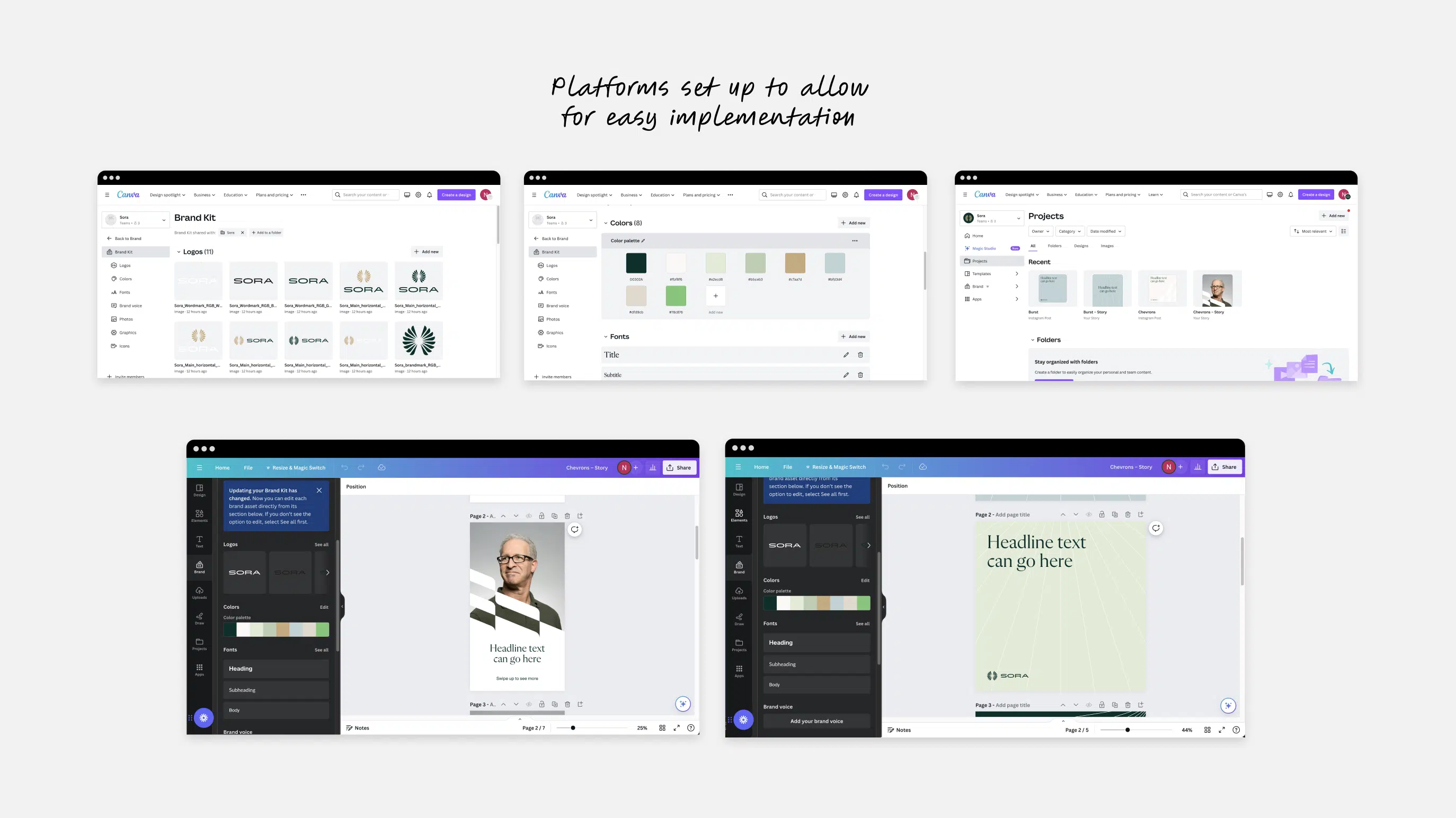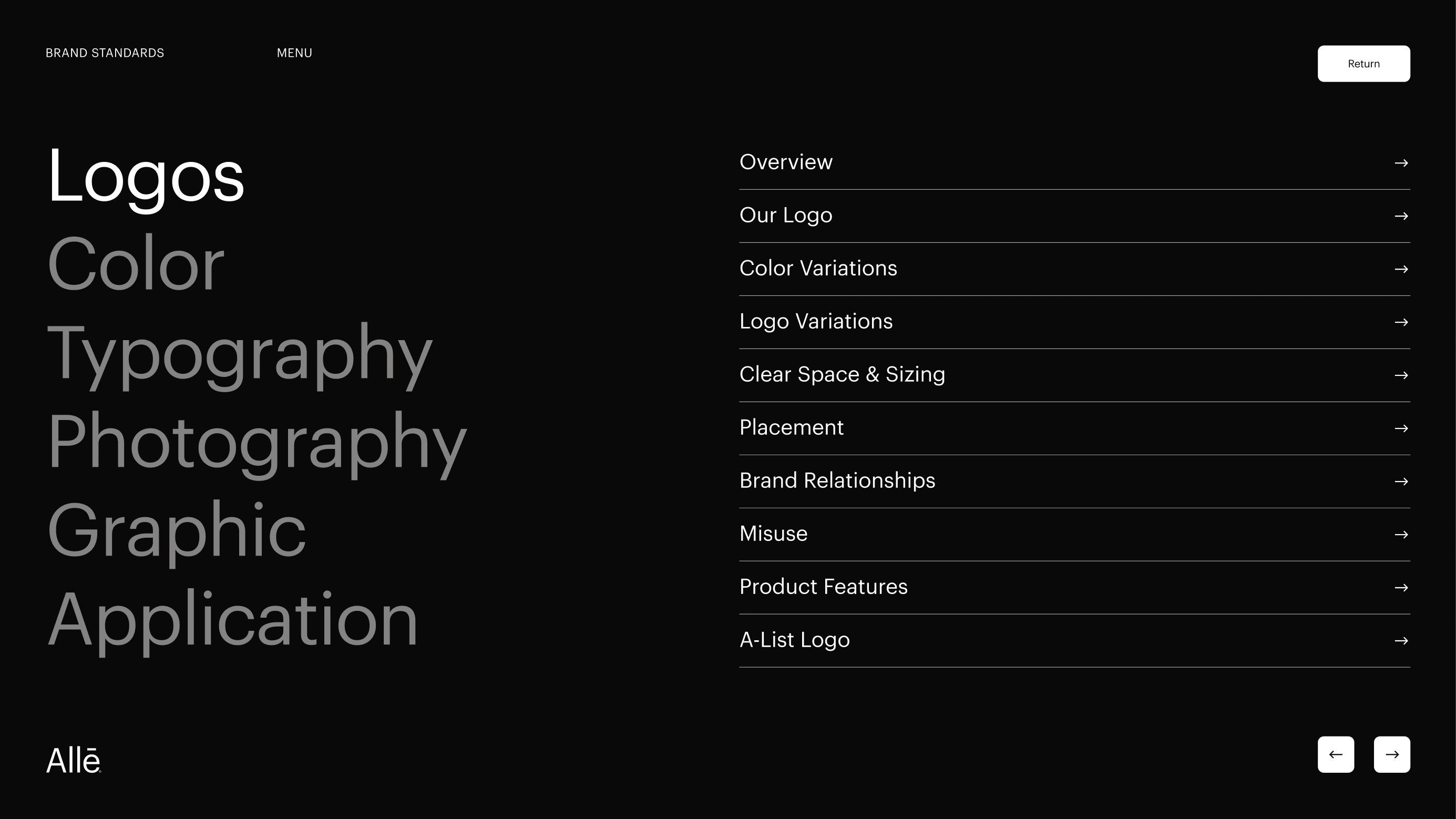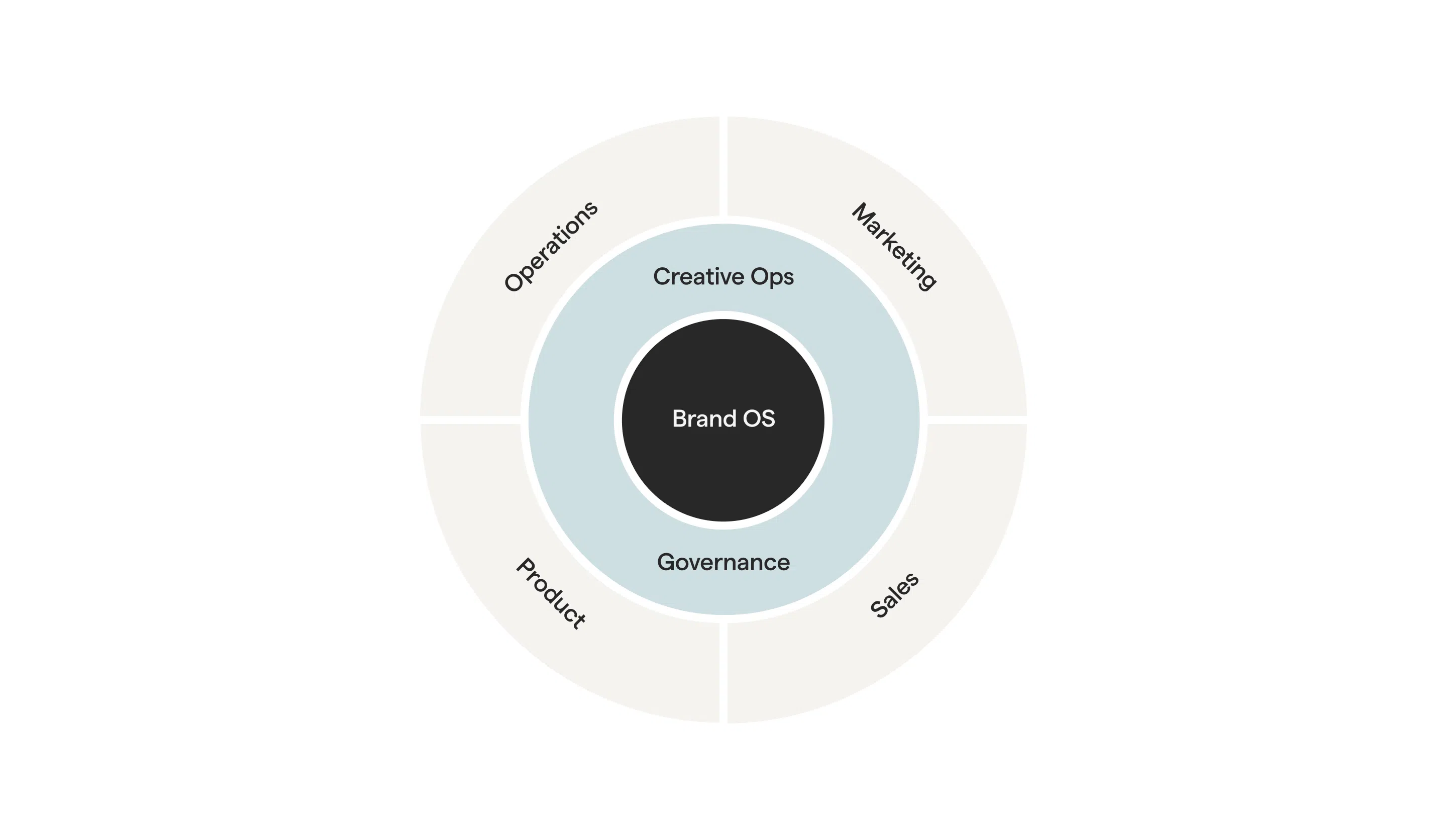Designing Brands as Operating Systems
The range of skills required for brand design has changed radically. Instead of just creating visual identities or narratives, brands are now being conceptualized as holistic ecosystems or operating systems (OS). This new perspective on brand design requires a rethinking of the traditional processes and skills required to deliver brands of the future. So how do we go about navigating the transformation of brand design in the age of the Brand OS at Bttr?
1. What is a Brand Operating System?
Similar to how an OS supports and manages computer functions, brands, when thought of as operating systems, become platforms on which varied experiences and interactions are built. This means every touchpoint, from product to customer service, needs to be seamlessly integrated. A Brand OS sits at the heart of an organization, supported by a creative ops process and a governance structure. This provides a centralized ‘single source of truth’ for all brand assets and how they’re deployed across product, marketing, operations and sales.
2. The Evolution of Brand Design
Previously, brand design was largely about creating a visual identity – a logo, a tagline, and supporting assets and materials. Now, it’s about designing a cohesive ecosystem that can be deployed efficiently across business units, teams, products, services, print assets and digital interfaces.
Integrated Design Thinking
It’s not just about a product or logo. Designers need to consider how different brand offerings connect, how they speak to each other, and how they make the user’s life and overall brand experience more seamless.
User-Centric Approach
With the OS model, brands can’t be passive; they need to actively mold to individual users. This means designs must be adaptable and receptive to user feedback. A brand OS makes adapting to change and updating assets centralized and efficient.
Design Systems
Much like a digital product design system, where a change to a font, color, button or image is applied centrally and deployed globally, a fully functioning Brand OS should deliver the same universal efficiency and scale.
3. Building a Cohesive Experience
The OS model demands that brand touchpoints exist in harmony.
Consistent Visual and Interactive Language From app interfaces to physical products, there needs to be a consistent design language system that communicates the brand’s core values and promise.
Intuitive Design
As brands expand their touchpoints, designers need to ensure that navigating through them is intuitive. This often involves understanding user behaviors and predicting needs.
At the simple end of the Brand OS spectrum, and a common practice in our ‘Startup Brand Design Sprints’ is to set up and hand over a Canva workspace. This is ideal for smaller teams and means everyone can quickly access and use the new brand via this simple OS to produce assets, from presentations, to social posts, business cards and more. We recently created a brand identity for a group of financial services companies, which we set up in Canva.

4. Challenges in Designing Brand OS
While designing a brand as an OS offers a rich user experience, it presents new and unique challenges:
Maintaining Consistency
As brands expand and diversify, maintaining a consistent brand image and experience across all platforms becomes challenging. At scale, the requirement for a Design Manager, or Design Ops Manager becomes apparent, responsible for updating and maintaining a Brand OS.
Data Sensitivity
Brands now interact with users across various platforms, collecting vast amounts of data. Designers must consider how to present data-related interactions transparently and ethically.
Our work with global aesthetics company, Allergan Aesthetics over the past few years has seen us collaborate with their teams on developing a complex and comprehensive Brand OS and Product Design System (DS). The Allē brand and digital product are an example of managing complexity at scale across a large organization. The foundations of the Allē Brand OS and DS exist as live files in Figma, accessible to in-house and agency teams, centrally managed and maintained by Design Managers and Design Ops coordinators.

5. Future Directions in Brand Design
As the concept of brands as OS becomes more mainstream, brand design will further evolve:
Collaborative Design
Brands might collaborate with users or other brands to create shared ecosystems, requiring designers to think beyond traditional boundaries.
Evolving Visual Representations
As brands turn into OS, traditional logos might not suffice. Brands are beginning to explore dynamic logos, adaptable interfaces, and more to represent their evolving nature.
In Summary
The shift towards designing brands as operating systems calls for a more integrative, user-centric, and forward-thinking approach. It’s not just about aesthetics but about creating a holistic experience that’s woven into the very fabric of users’ daily lives. As brand designers, the challenge is exciting, but it also necessitates a broader understanding of technology, human behavior, and the ever-evolving digital landscape.


